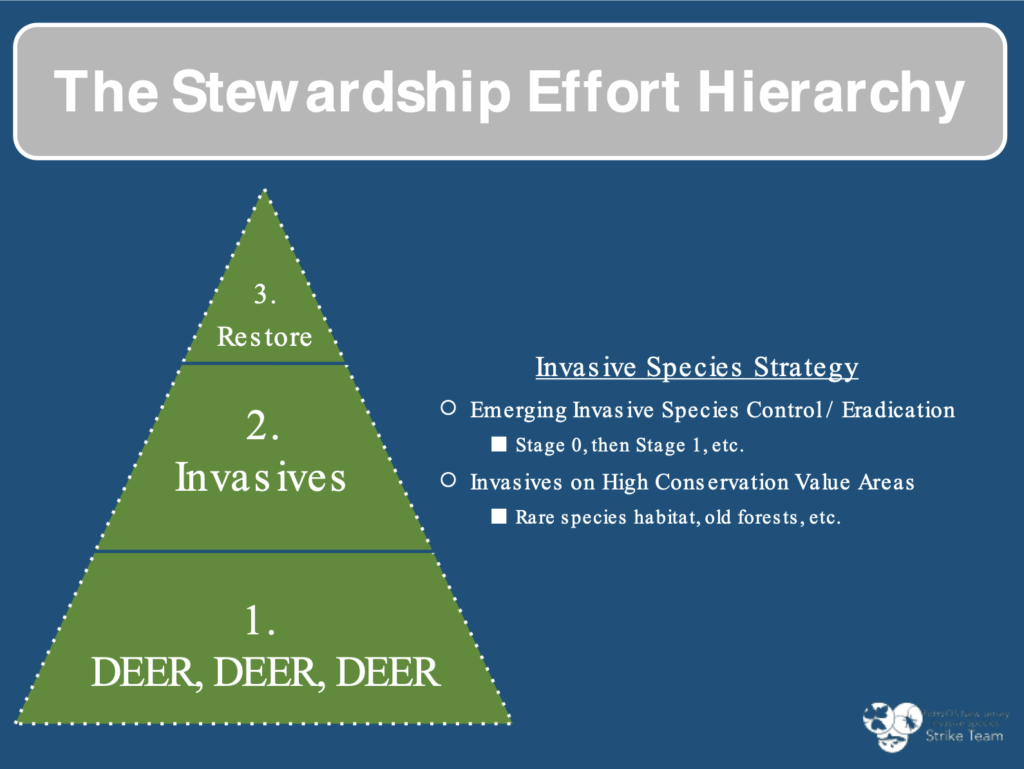Princeton University Stewardship Plan
ABOUT

In 2020, the Strike Team completed a comprehensive stewardship plan for Princeton University’s 1,264-acre campus.
The goal of any plan is to provide effective and efficient guidance toward improving ecological health. We start by mapping natural plant communities (e.g., forest types, shrublands, meadows) and invasive species across as “stands” of like plant composition. Once completed and analyzed, making heavy use of Geographic Information Systems (GIS), we provide prioritized recommendations. Recommendations focus on strategic implementation steps that begin with the most achievable to those that can require many years to accomplish – all with the intention of improving ecological health.
The property contains 10 acres of old growth forest in the heart of the campus, featuring 200+ year old White Oaks. In addition, it features nearly 80 acres of minimally invaded forest and multiple opportunities to create wildflower meadows. There were 38 emerging invasive species and hundreds of acres of severely infested habitats. Since 2020, the Strike Team has consulted with the university on plan implementation.
The plan can be downloaded here.
The Strike Team always stresses the ”Stewardship Hierarchy” in our plans.

- Whenever feasible, this includes the importance of deer management – a reduced herd allows native plants to effectively compete against invasive plants.
- The next priority is elimination of small populations of emerging invasive plant populations before they can spread to become larger intractable problems. Priority should be given to controlling species with the least number of statewide populations so that they cannot spread to neighboring properties.
- This is followed by improving / protecting the highest value conservation areas that typically have relatively few infestations. Ecological restoration, including tree planting and meadow installation to replace open lands or lawns are often high-value strategies.
- Finally, long-term efforts to reduce large infestations are recommended, starting from infested areas adjacent to healthier areas to stop their spread into new areas.
PROJECT TYPE
Contract
PROJECT PERIOD
2020-present with ongoing consultations
PROJECT LOCATIONS
Princeton University Campus
